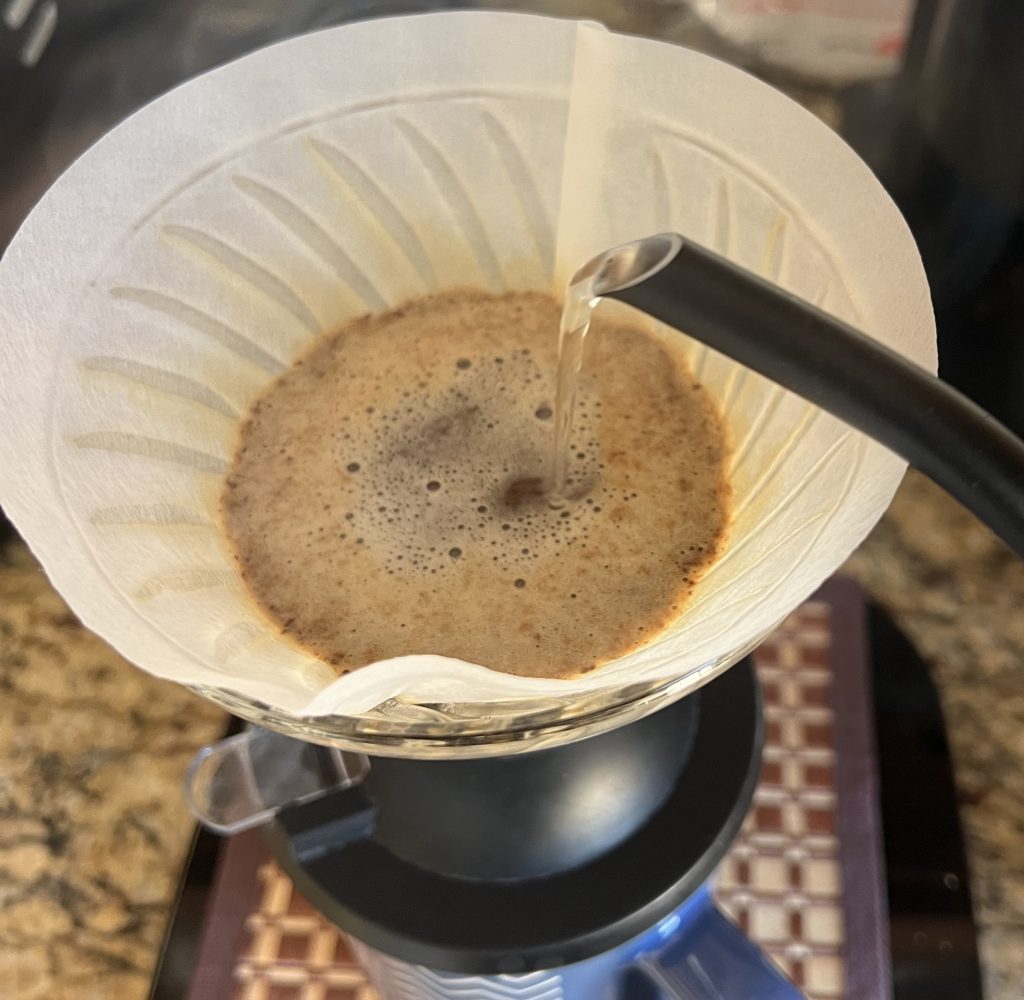The optimal way to brew strong pour-over coffee with minimal grinds
From the Journal: Physics of Fluids

WASHINGTON, April 8, 2025 – Tens of billions of kilograms of coffee are consumed around the world each year. However, due to its very specific agricultural needs, coffee can be difficult to cultivate, and ongoing climate change threatens its growth.
To efficiently meet the high demand for coffee grounds, researchers from the University of Pennsylvania worked to optimize their use in pour-over coffee. They presented their suggestions in Physics of Fluids, by AIP Publishing.
“What we recommend is making the pour height as high as possible, while still maintaining a laminar flow, where the jet doesn’t break up when it impacts the coffee grinds,” said author Ernest Park.
In particular, the group found the thick water jets typical of standard gooseneck kettles are ideal for achieving this necessary height and laminar flow. Strong — but focused — water jets create an avalanche in the coffee grounds. Displaced grounds recirculate as the water digs deeper into the coffee bed, allowing for better mixing between the water and the grounds, and thus, results in a stronger coffee with fewer beans. If the water jet is too thin, it cannot adequately create this interaction to achieve a desirable strength and sensory experience.
“If you have a thin jet, then it tends to break up into droplets,” said author Margot Young. “That’s what you want to avoid in these pour-overs, because that means the jet cannot mix the coffee grounds effectively.”
The dark color of coffee beans — and of coffee itself — makes it hard to demystify. Along with creating pour-over drinks with actual coffee grounds, the scientists supplemented their study with laser-illuminated transparent particles in a glass funnel to help thoroughly visualize the mixing dynamics and understand how the liquid jet affects the grains.
Though the group does not plan further studies related to coffee, they say there are many other parameters left to explore, such as the impacts of the size of the coffee grounds on the interplay between the physics and chemistry of the brewing process. When it comes to easy, accessible kitchen science, the researchers have some unorthodox advice: Do try this at home.
“We can really learn something from both the chemistry and physics point of view by looking at the kitchen,” said author Arnold Mathijssen. “It leads to new science where you didn’t expect it.”
###
Article Title
Pour-over coffee: Mixing by a water jet impinging on a granular bed with avalanche dynamics
Authors
Ernest Park, Margot Young, and Arnold J.T.M. Mathijssen
Author Affiliations
University of Pennsylvania
